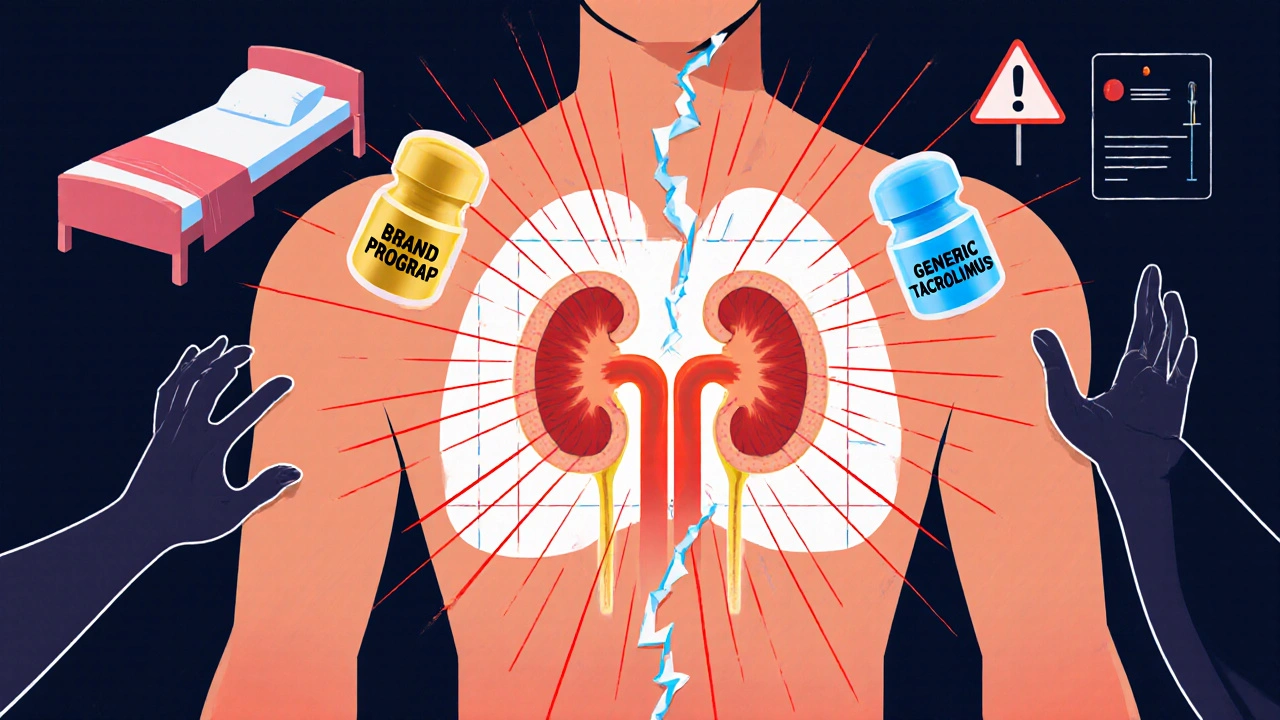Tacrolimus Generic: What You Need to Know About Cost, Safety, and Alternatives
When you're taking tacrolimus, a powerful immunosuppressant used after organ transplants to prevent rejection. Also known as Prograf, it's one of the most critical medications for transplant patients. Many people switch to tacrolimus generic to save money—but not everyone knows what that really means for their health. The good news? For most people, generic tacrolimus works just as well as the brand. But it’s not that simple. Small differences in how the drug is made can affect blood levels, and for someone with a transplanted kidney or liver, even a tiny shift can be risky.
That’s why generic immunosuppressants, medications that copy the active ingredient of brand-name drugs but are made by different manufacturers need careful monitoring. Unlike antibiotics or cholesterol pills, immunosuppressants have a narrow therapeutic window—meaning the difference between a safe dose and a dangerous one is small. The FDA requires generics to be bioequivalent, but real-world studies show some patients experience changes in blood levels after switching. That’s why doctors often stick with one brand or generic version for life, and why blood tests are non-negotiable. If you’re on tacrolimus, your lab results aren’t just numbers—they’re your body’s way of telling you if the medication is still working right.
It’s also worth knowing that not all generics are made the same. Some manufacturers have better quality control than others, and switching between different generic brands—even if they’re both labeled "tacrolimus"—can cause problems. That’s why many transplant centers have preferred suppliers. And while cost is a huge factor, especially with no insurance, cutting corners here isn’t worth the risk. If you’re thinking about switching to a cheaper version, talk to your pharmacist and doctor first. Ask if they’ve had good results with that specific generic. Check your blood levels before and after the switch. And don’t assume all online pharmacies are safe—some sell counterfeit or poorly made versions.
What you’ll find in the posts below isn’t just a list of articles. It’s a practical guide to how generic drugs like tacrolimus really work in the real world. You’ll see how long-term safety studies compare generics to brand names, how patient groups share their experiences online, and why some medications—like antiseizure drugs—can’t be swapped freely, even when they seem identical. You’ll also learn about the legal process behind generic approval in the U.S., and how public systems in Europe drive down prices without sacrificing quality. This isn’t theory. It’s what patients and doctors are dealing with every day.

